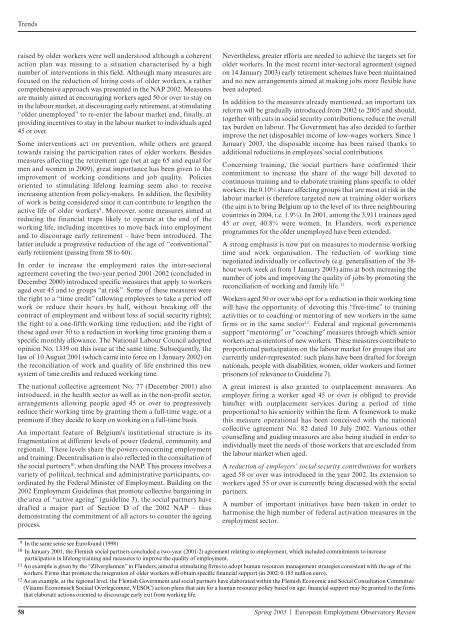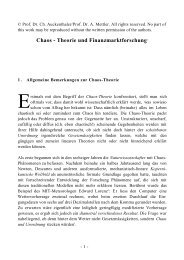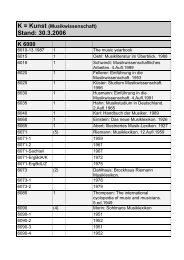FRANCE The
FRANCE The
FRANCE The
Create successful ePaper yourself
Turn your PDF publications into a flip-book with our unique Google optimized e-Paper software.
Trends<br />
raised by older workers were well understood although a coherent<br />
action plan was missing to a situation characterised by a high<br />
number of interventions in this field. Although many measures are<br />
focused on the reduction of hiring costs of older workers, a rather<br />
comprehensive approach was presented in the NAP 2002. Measures<br />
are mainly aimed at encouraging workers aged 50 or over to stay on<br />
in the labour market, at discouraging early retirement, at stimulating<br />
“older unemployed” to re-enter the labour market and, finally, at<br />
providing incentives to stay in the labour market to individuals aged<br />
45 or over.<br />
Some interventions act on prevention, while others are geared<br />
towards raising the participation rates of older workers. Besides<br />
measures affecting the retirement age (set at age 65 and equal for<br />
men and women in 2009), great importance has been given to the<br />
improvement of working conditions and job quality. Policies<br />
oriented to stimulating lifelong learning seem also to receive<br />
increasing attention from policy-makers. In addition, the flexibility<br />
of work is being considered since it can contribute to lengthen the<br />
active life of older workers9 . Moreover, some measures aimed at<br />
reducing the financial traps likely to operate at the end of the<br />
working life, including incentives to move back into employment<br />
and to discourage early retirement – have been introduced. <strong>The</strong><br />
latter include a progressive reduction of the age of “conventional”<br />
early retirement (passing from 58 to 60).<br />
In order to increase the employment rates the inter-sectoral<br />
agreement covering the two-year period 2001-2002 (concluded in<br />
December 2000) introduced specific measures that apply to workers<br />
aged over 45 and to groups “at risk”. Some of these measures were<br />
the right to a “time credit” (allowing employees to take a period off<br />
work or reduce their hours by half, without breaking off the<br />
contract of employment and without loss of social security rights);<br />
the right to a one-fifth working time reduction; and the right of<br />
those aged over 50 to a reduction in working time granting them a<br />
specific monthly allowance. <strong>The</strong> National Labour Council adopted<br />
opinion No. 1339 on this issue at the same time. Subsequently, the<br />
law of 10 August 2001 (which came into force on 1 January 2002) on<br />
the reconciliation of work and quality of life enshrined this new<br />
system of time credits and reduced working time.<br />
<strong>The</strong> national collective agreement No. 77 (December 2001) also<br />
introduced, in the health sector as well as in the non-profit sector,<br />
arrangements allowing people aged 45 or over to progressively<br />
reduce their working time by granting them a full-time wage, or a<br />
premium if they decide to keep on working on a full-time basis.<br />
An important feature of Belgium's institutional structure is its<br />
fragmentation at different levels of power (federal, community and<br />
regional). <strong>The</strong>se levels share the powers concerning employment<br />
and training. Decentralisation is also reflected in the consultation of<br />
the social partners10 ,when drafting the NAP. This process involves a<br />
variety of political, technical and administrative participants, coordinated<br />
by the Federal Minister of Employment. Building on the<br />
2002 Employment Guidelines that promote collective bargaining in<br />
the area of “active ageing” (guideline 3), the social partners have<br />
drafted a major part of Section D of the 2002 NAP – thus<br />
demonstrating the commitment of all actors to counter the ageing<br />
process.<br />
Nevertheless, greater efforts are needed to achieve the targets set for<br />
older workers. In the most recent inter-sectoral agreement (signed<br />
on 14 January 2003) early retirement schemes have been maintained<br />
and no new arrangements aimed at making jobs more flexible have<br />
been adopted.<br />
In addition to the measures already mentioned, an important tax<br />
reform will be gradually introduced from 2002 to 2005 and should,<br />
together with cuts in social security contributions, reduce the overall<br />
tax burden on labour. <strong>The</strong> Government has also decided to further<br />
improve the net (disposable) income of low-wages workers. Since 1<br />
January 2003, the disposable income has been raised thanks to<br />
additional reductions in employees’ social contributions.<br />
Concerning training, the social partners have confirmed their<br />
commitment to increase the share of the wage bill devoted to<br />
continuous training and to elaborate training plans specific to older<br />
workers: the 0.10% share affecting groups that are most at risk in the<br />
labour market is therefore targeted now at training older workers<br />
(the aim is to bring Belgium up to the level of its three neighbouring<br />
countries in 2004, i.e. 1.9%). In 2001, among the 3,911 trainees aged<br />
45 or over, 40.8% were women. In Flanders, work experience<br />
programmes for the older unemployed have been extended.<br />
A strong emphasis is now put on measures to modernise working<br />
time and work organisation. <strong>The</strong> reduction of working time<br />
negotiated individually or collectively (e.g. generalisation of the 38hour<br />
work week as from 1 January 2003) aims at both increasing the<br />
number of jobs and improving the quality of jobs by promoting the<br />
reconciliation of working and family life. 11<br />
Workers aged 50 or over who opt for a reduction in their working time<br />
will have the opportunity of devoting this “free-time” to training<br />
activities or to coaching or mentoring of new workers in the same<br />
firms or in the same sector12 .Federal and regional governments<br />
support “mentoring” or “coaching” measures through which senior<br />
workers act as mentors of new workers. <strong>The</strong>se measures contribute to<br />
proportional participation on the labour market for groups that are<br />
currently under-represented: such plans have been drafted for foreign<br />
nationals, people with disabilities, women, older workers and former<br />
prisoners (of relevance to Guideline 7).<br />
A great interest is also granted to outplacement measures. An<br />
employer firing a worker aged 45 or over is obliged to provide<br />
him/her with outplacement services during a period of time<br />
proportional to his seniority within the firm. A framework to make<br />
this measure operational has been conceived with the national<br />
collective agreement No. 82 dated 10 July 2002. Various other<br />
counselling and guiding measures are also being studied in order to<br />
individually meet the needs of those workers that are excluded from<br />
the labour market when aged.<br />
A reduction of employers’ social security contributions for workers<br />
aged 58 or over was introduced in the year 2002. Its extension to<br />
workers aged 55 or over is currently being discussed with the social<br />
partners.<br />
A number of important initiatives have been taken in order to<br />
harmonise the high number of federal activation measures in the<br />
employment sector.<br />
9 In the same sense see Eurofound (1998)<br />
10 In January 2001, the Flemish social partners concluded a two-year (2001-2) agreement relating to employment, which included commitments to increase<br />
participation in lifelong training and measures to improve the quality of employment.<br />
11 An example is given by the “Zilverplannen” in Flanders, aimed at stimulating firms to adopt human resources management strategies consistent with the age of the<br />
workers. Firms that promote the integration of older workers will obtain specific financial support (in 2002: 0.185 million euro).<br />
12 As an example, at the regional level, the Flemish Government and social partners have elaborated within the Flemish Economic and Social Consultation Committee<br />
(Vlaams Economisch Sociaal Overlegcomité, VESOC) action plans that aim for a human resource policy based on age: financial support may be granted to the firms<br />
that elaborate actions oriented to discourage early exit from working life.<br />
58 Spring 2003 | European Employment Observatory Review

















